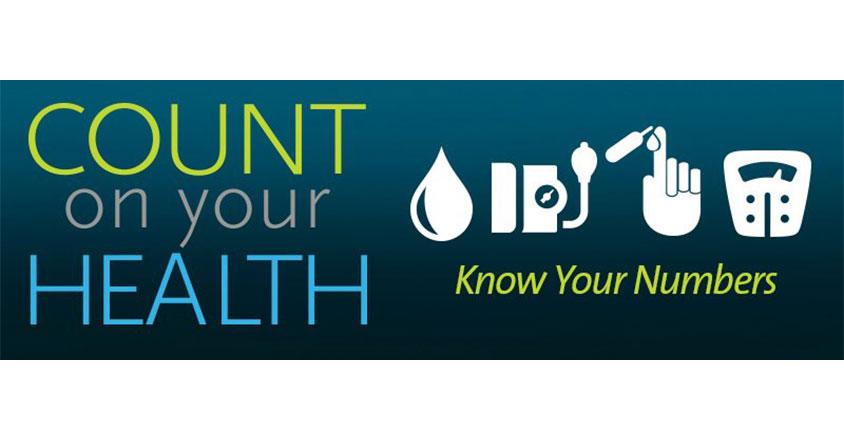

4 Ways To Know If You Are in Good Health
Thursday, March 16, 2017
Do you know your numbers?
There are four key measurements of health you should know and track. They are early warning signs for heart disease and diabetes. Since these two diseases have few noticeable symptoms, you may not even realize you are ill — or at risk for becoming ill — until it’s too late. Keeping these numbers within a healthy range can help prevent a medical emergency, such as a heart attack.
1: Blood Cholesterol
Cholesterol is a soft, waxy substance found in every cell in your body, including blood cells. Too much cholesterol may accumulate on your blood vessel walls, where it can harden and turn into plaque. This may narrow your blood vessels, reducing blood flow and putting you at risk for heart disease.
There are different types of cholesterol. You’ve probably heard of “good” cholesterol (HDL, or high-density lipoproteins), “bad” cholesterol (LDL, or low-density lipoproteins) and triglycerides (a form of fat that can raise your cholesterol levels). All three, plus your total cholesterol, are important.
Heart experts recommend the following healthy blood cholesterol levels. You want to measure cholesterol after fasting for nine to 12 hours.
Total cholesterol < 200 mg/dL (milligrams per deciliter)
HDL cholesterol > 60 mg/dL
LDL cholesterol < 100 mg/dL
Triglycerides < 100 mg/dL
2: Blood Pressure
Blood pressure measures the pressure in your arteries when your heart beats (systolic pressure) and in between beats (diastolic pressure). Your blood pressure is your systolic pressure over your diastolic pressure. If you have high blood pressure, also known as hypertension, your heart must work harder than normal, which can lead to heart disease, stroke and other serious conditions. A normal blood pressure is generally considered less than 120 systolic and less than 80 diastolic. Talk to your doctor about the right target blood pressure goal for you.
3: Blood Sugar
People with diabetes have to much sugar (glucose) in their blood. Diabetes is a serious disease, affecting nearly 30 million people in the U.S.
Your doctor can perform several tests to measure your blood glucose. The fasting plasma glucose test (FPGT) and the oral glucose tolerance test (OGTT) require you to fast beforehand. The A1C measures average blood glucose over the previous three months and does not require fasting. Normal blood glucose levels are typically:
FPGT < 100 mg/dL
OGTT < 140 mg/dL
A1C < 5.7 percent
4: Weight
Obesity, especially in the form of extra fat around your midsection, is a significant risk factor for heart disease and diabetes, so your weight, body mass index (BMI) and waist circumference together make up the fourth key health measurement. BMI is a rough measure of the amount of fat in your body based on your weight and height. Use this chart, use an online calculator or ask your doctor to determine your BMI. A normal BMI is between 18.5 and 24.9. Your waist circumference should be less than 35 inches (women) or 40 inches (men). Measure your waist just above your hipbones and immediately after exhaling.
Do One Thing: Know your numbers. Get a baseline measurement of these four health markers and talk to your doctor about your disease risk factors.


